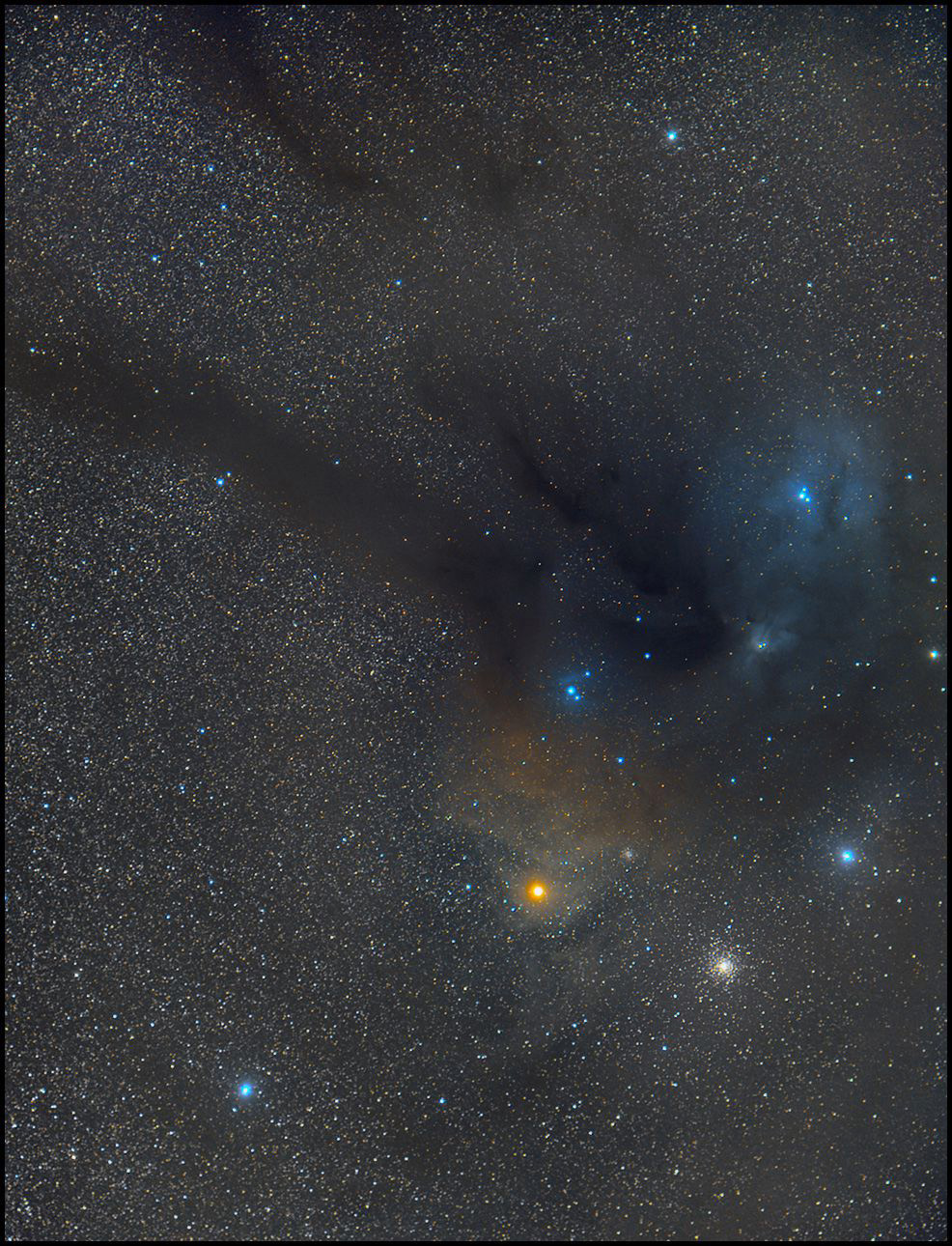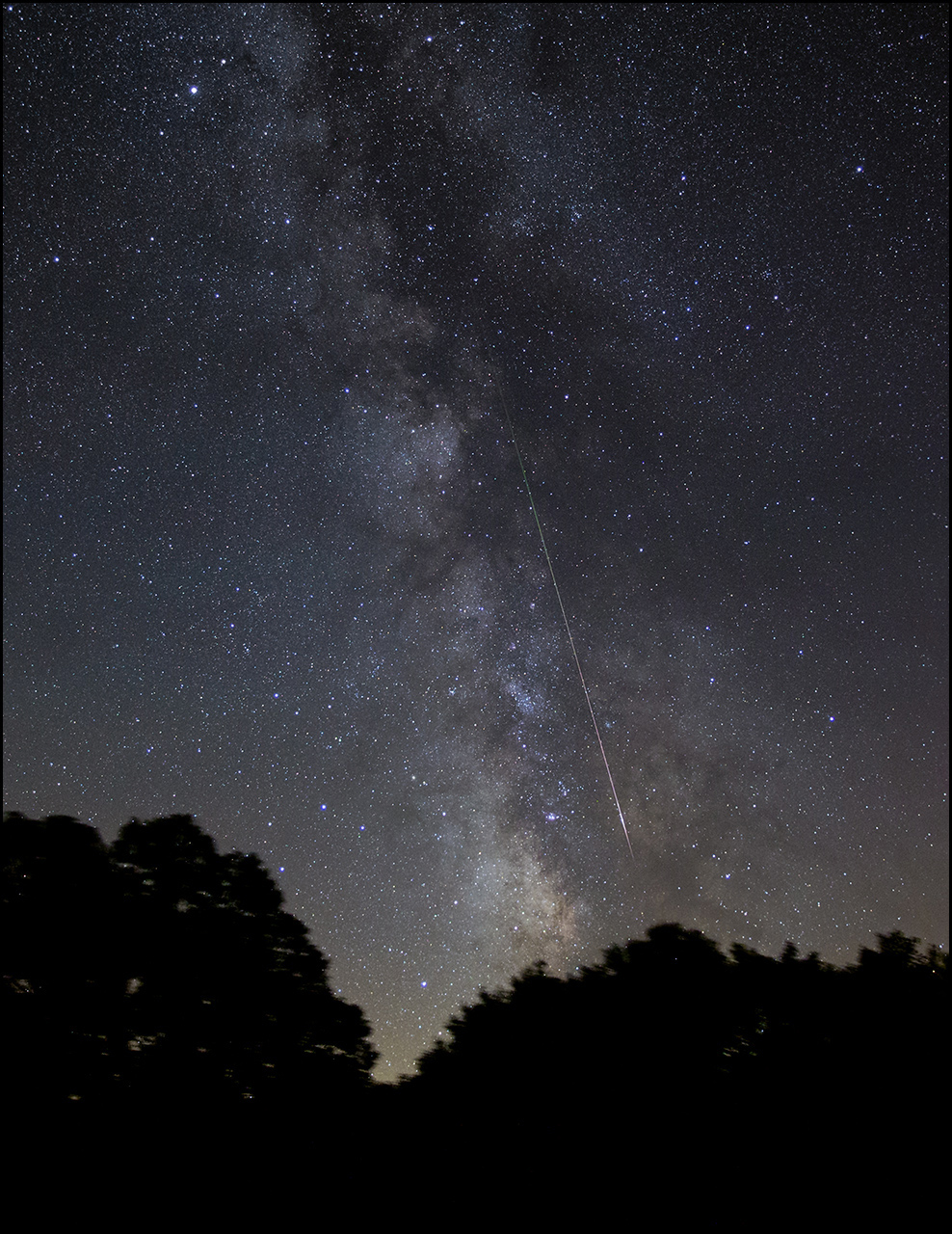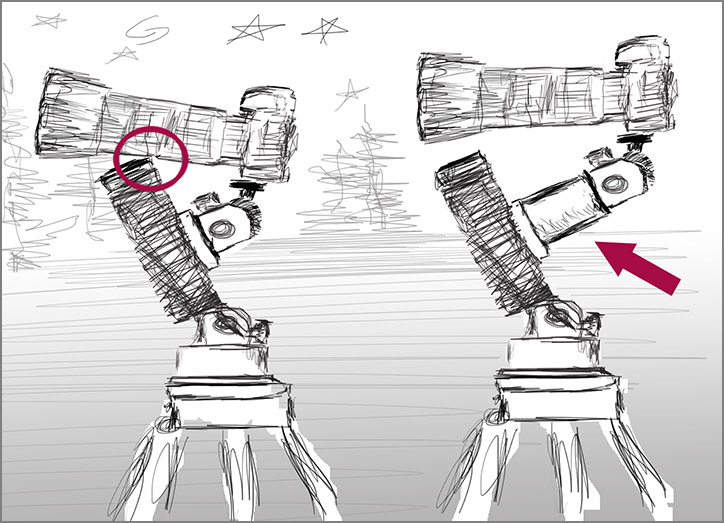Doughton State Park for the Perseids
8/11-13/2015. Amy and I took the RV and two dogs to Doughton State Park. It was a preview of autumn up there. 90's down here, highs in the 70's there with lows in the upper 50's. And all that lovely weather near New Moon at the peak of the Perseids.
It takes two hours and change to get there from here. I began each night with a series of exposures of the Antares / Rho Ophiuchi region using the SkyTracker and a 180mm F2.8 Nikkor stopped to F4 using filter rings. The first night, I shot three-minute exposures. The next night was actually better, clearer, darker, but I cut back to two-minute exposures anyway. That tightened up star images a little and reduced the (minimal) level of sky brightness.

Click the image to see a higher resolution version.
2h 20m of 3- and 2-minute exposures
180mm F2.8 Nikkor stopped to 58mm
Canon 6D 1600 ISO
The 6" F5.9 achromat with 16mm Nagler let me sweep up some faint stuff that looked great (M51, M101, M22, the Veil, both sides...) but the 14x70 Fujis were really the better rich field cruisers for my tastes and ambitions this time out. The binoculars revealed dark lanes lacing the Milky Way from horizon to horizon. The big clouds in the image above were readily seen as absences of stars in both instruments.
The real business of the trip (as far as stargazing goes) was the peak of the Perseid shower. After Antares, M4, et al got into the trees, I switched to a very wide-angle kit. On night one, I used the 14mm Rokinon which attracted dew like nobody's business. I had to wipe it down every two or three frames and the residual moisture produced extremely odd stars. I tried to fix two cameras to the SkyTracker which turned into a fiasco. The next night, I used the 16mm F3.5 Nikkor fisheye with a non-Fotodiox adapter for the Canon 6D. Infinity focus is near the 2m mark(!) but it is excellent once found. Here's a reasonably tight crop from a frame begun six minutes before midnight, on August 12, 2015, during which this -3 magnitude Perseid obliged by sizzling down the Milky Way.

Click to enlarge (and admire the variegated trail)
120 seconds, ISO 1600
16mm F3.5 Nikkor fisheye on Canon 6D
SkyTracker
8/18/2015. See, the thing is, that iOptron SkyTracker (for a picture see here, item 3) is a lovely piece of gear, but you can't always aim it very low into the southern sky. The photo of Antares, Rho Ophiuchi, M4, etc, is about as low as it can be aimed with a N/S "vertical" or "portrait" orientation (choose your lingo) before the barrel of the lens rests on the top of the SkyTracker. There's no real issue if you're shooting with a 24mm or 14mm or a fisheye or other wide lens (as with the Perseid photo above). With a wide enough lens, the horizon can be easily included or far southern targets selected. They just can't be centered.
But what if you have in mind a vertical composition of Omega Centauri with enough focal length to resolve its stars while aimed low enough to include the distant horizon at the bottom of the frame? As I do, in fact. Well, then you're just SOL but there is an easy fix.

What I am on about. Circle at left shows collision of lens and SkyTracker.
Arrow at right indicates an extension between rotating platform and ballhead.
The conflict is even more serious with the camera oriented for a N/S
composition, but that seems (even) harder to sketch.
Put a short extension under the ballhead. Take a 3/8x16 threaded rod (or a fully threaded bolt) about 3-inches long. Use a socket head bolt if you have one; SuperGlue a hex nut on one end of the rod if you don't (I didn't). Run it through the rotating disk that mates the ballhead to the SkyTracker, replacing (and not losing) the fancy combination stud that normally goes there. Be sure the hex nut or socket head fits into the recess below the rotating platter where the stud normally goes. Place a PVC pipe (or a machined aluminum widget, or a substantial tube, square or otherwise, something) over the long 3/8x16 bolt or rod, and tighten the ballhead down against the end of the extension. Then use everything just as usual and enjoy your newfound access to the low southern sky.
It's a tool-less switch from unextended to extended, so just stuff the pieces in a Ziplock bag and have them ready in the bottom of the camera case -- along with the not-ready-for-prime-time dual camera mount pieces (all in good time).
I think the steel-rod / PVC pipe combination will be rigid enough considering the light loads, short extension, and relatively undemanding focal lengths involved. If not, lathe time.
Except where noted, deep-sky photos are made with an SBIG ST2000XM CCD behind a 10-inch Astro-Tech Ritchey-Chretien carried on an Astro-Physics Mach1GTO. The CCD is equipped with Baader wide- and narrow-band filters. The internal guide chip of the CCD most often keeps the OTA pointed in the right direction (I'll let you know when an OAG or guidescope takes its place). Camera control and guiding are handled by Maxim DL 5.12. The stock focuser on the AT10RC has been augmented with Robofocus 3.0.9 using adapters turned on the lathe downstairs. A Canon 6D and a modded 50D find themselves mounted on an Orion 10" F4 Newtonian or carrying widefield glass on an iOptron Skytracker. Beginning in May 2013, PixInsight has taken over more and more of the heavy lifting -- alignment, stacking, gradient removal, noise-reduction, transfer function modification, color calibration, and deconvolution. Photoshop CS4 et seq and the Focus Magic plugin get their licks in, too.
:: top ::